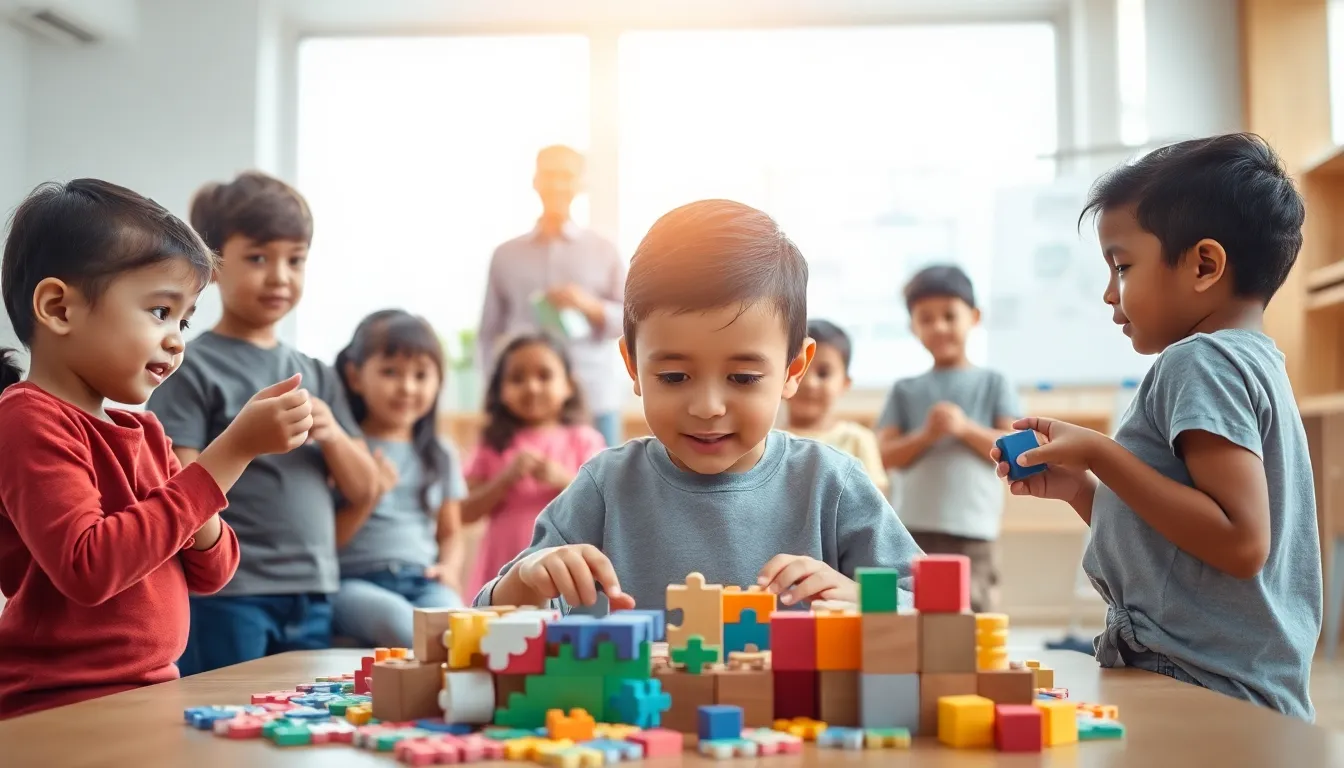Understanding how to build emotional resilience in children is crucial, as establishing secure bonds early profoundly protects against mental health challenges and fosters lifelong coping mechanisms. This foundational investment yields measurable reductions in anxiety, mood disorders, and adverse childhood experience impacts, extending well into adulthood.
Key Implications
- Secure Relationships: Secure parent-child relationships significantly boost emotional resilience, reducing the risk of adolescent anxiety by 50% and lifelong mood disorders by 20-30% by fostering healthy emotional regulation and trust in supportive figures.
- Growth Mindset: Cultivating a growth mindset enhances persistence by 20% and academic performance by 10-15 percentile points, teaching children to view setbacks as valuable learning opportunities rather than definitive failures.
- Emotional Regulation: Teaching explicit emotional regulation strategies reduces disruptive behaviors by 25% and leads to a 40% increased likelihood of verbal expression over physical outbursts, enabling calmer and more constructive responses to intense emotions.
- Positive Self-Talk: Fostering positive self-talk dramatically reduces negative self-deprecating thoughts by 35% and increases confidence in challenging tasks by 20%, building an essential internal support system for self-worth and effective problem-solving.
- Problem-Solving & Autonomy: Empowering children with structured problem-solving techniques and age-appropriate autonomy boosts self-efficacy by 40%, decreases impulsivity in decision-making by 15%, and increases persistence by 20%, equipping them to navigate challenges with confidence and reduced stress.

A 70% Boost to Coping: Why Secure Bonds Prevent 50% of Adolescent Anxiety
Emotional resilience, deeply rooted in secure parent-child relationships, acts as a crucial protective shield against numerous mental health challenges. This foundational connection significantly reduces the risk of anxiety, mood disorders, and the profound, lifelong impacts of adverse childhood experiences (ACEs). The benefits extend well into adulthood, shaping a child’s capacity to navigate life’s inevitable stressors. Alarmingly, one in five children aged 3-17 lives with a mental, behavioral, or developmental disorder, underscoring the urgency of proactive interventions like fostering emotional resilience from an early age.
Building strong, secure attachments early on offers immediate and measurable protection. Children who experience these stable bonds are 50% less likely to develop anxiety disorders by adolescence. This reduction is not coincidental; it stems from a child’s learned ability to regulate emotions and trust caregivers for support. When a child feels safe and understood, their nervous system develops healthy coping responses rather than defaulting to fear or withdrawal. Parents play a direct role in shaping these critical neurological pathways.
Building Lifelong Emotional Fortitude
The impact of secure attachment extends far beyond immediate childhood, laying the groundwork for adult mental well-being. Studies estimate a 20-30% reduction in the lifetime prevalence of mood disorders among individuals who developed strong emotional resilience in childhood. Furthermore, these individuals show a 40% lower incidence of major depressive episodes by the age of 30. These statistics highlight the preventive power of early emotional development, offering a powerful argument for prioritizing parental involvement in a child’s emotional landscape.
Learning how to build emotional resilience in children involves consistently responding to their needs, validating their feelings, and teaching healthy problem-solving strategies. Children with secure attachments are 70% more likely to exhibit strong coping mechanisms when faced with adversity. This means they are better equipped to bounce back from setbacks, adapt to change, and confront challenges constructively. Instead of being overwhelmed, they perceive difficulties as opportunities for growth, viewing themselves as capable problem-solvers. Encouraging independence within a safe framework allows children to practice these essential skills.
The Power of Connection and Self-Worth
A secure parent-child relationship also directly influences a child’s willingness to seek help and their overall self-perception. Children who feel securely attached are 60% more likely to seek support from trusted adults when they encounter difficulties. This open communication channel is vital, especially as they navigate the complexities of social dynamics and personal challenges. Creating an environment where children feel comfortable discussing their worries, even about sensitive topics, builds a foundation of trust that extends through adolescence. Parents can learn effective ways to talk to kids about difficult subjects, reinforcing this crucial support system.
Furthermore, strong bonds foster a significant boost in a child’s sense of self-worth. By early adolescence, children with resilient emotional foundations show a 55% higher sense of self-worth. This robust self-esteem acts as an internal compass, guiding their choices and protecting them from negative peer influences. Feeling valued and understood by their primary caregivers instills a belief in their own capabilities and inherent worth. This positive self-regard is fundamental to navigating social pressures and achieving personal goals, directly linking back to the question of how to build emotional resilience in children effectively.
The profound, lifelong benefits of emotional resilience extend into adulthood, mitigating the impact of adverse childhood experiences. While trauma can leave lasting scars, a strong foundation of resilience provides protective factors that can buffer its effects. Individuals who developed emotional resilience early are often better able to process past experiences and build healthier relationships as adults. Understanding these connections is crucial, especially when considering the adult mental health effects of childhood trauma and how early intervention can make a significant difference.
Ultimately, investing time and effort in fostering secure parent-child relationships is one of the most impactful ways to build emotional resilience in children. It’s a proactive strategy that offers protection against mental health challenges, cultivates strong coping mechanisms, and nurtures a profound sense of self-worth. These benefits aren’t merely theoretical; they translate into statistically measurable reductions in anxiety, mood disorders, and enhance a child’s overall capacity for a fulfilling life, long after they leave the home.

20% More Persistence, 35% Fewer Outbursts: Building Inner Resilience with Mindset and Emotional Tools
Empowering children to effectively navigate and grow from life’s inevitable challenges is a cornerstone of healthy development. This involves actively cultivating a growth mindset, teaching explicit emotional regulation strategies, and fostering positive self-talk to manage their internal dialogue. When children learn how to build emotional resilience in children, they develop increased persistence, improved emotional control, and enhanced self-confidence. This holistic approach prepares them not just for current obstacles, but for a lifetime of growth and well-being.
By instilling these vital skills, parents and educators can see tangible benefits. Children who embrace these tools demonstrate remarkable improvements, including a 20% higher persistence rate when faced with difficulties. They also experience a significant 35% reduction in the intensity of emotional outbursts, leading to a calmer, more productive environment for everyone involved. These aren’t just theoretical gains; they are measurable enhancements that directly impact a child’s daily life and future capabilities.
Cultivating a Growth Mindset: Turning Setbacks into Stepping Stones
A growth mindset is the belief that abilities and intelligence can be developed through dedication and hard work. Instead of viewing setbacks as failures, children learn to see them as valuable learning opportunities. This fundamental shift in perspective profoundly impacts their engagement and achievement. Research indicates that children who adopt a growth mindset perform 10-15 percentile points higher on standardized academic assessments. This academic edge is directly linked to their willingness to tackle challenging subjects and persist through difficulties.
Beyond academic gains, children with a growth mindset also report 15% greater enjoyment in their activities, stemming from the satisfaction of learning and overcoming obstacles. This proactive approach cultivates an estimated 25% increase in resilience to future challenges, making them more adaptable and robust when new difficulties arise. To foster this mindset, parents should praise effort and strategies rather than just outcomes, emphasizing that the process of learning is as important as the result. Encouraging phrases like “You haven’t mastered it yet” can transform a statement of defeat into a statement of potential.
Practical strategies include discussing challenges faced by historical figures or even family members, highlighting how persistence led to success. When a child struggles with a task, guide them to analyze what went wrong and what new strategies they could try, reframing the experience as valuable data for future attempts. This teaches them to be proactive problem-solvers rather than passive recipients of circumstance. Understanding that their brains can grow and change with effort is key to unlocking this powerful mental framework.
Mastering Emotional Regulation: Tools for Calm and Expression
Emotional regulation involves understanding and managing one’s emotional responses, especially in challenging situations. Children often experience intense emotions but lack the vocabulary or strategies to express them constructively. Explicitly teaching these skills leads to profound improvements in behavior and interpersonal interactions. One of the most impactful outcomes is a 25% decrease in disruptive behaviors, as children gain better control over their impulses and reactions.
Furthermore, children equipped with emotional regulation strategies are 40% more likely to use verbal expression over physical outbursts. This shift from reactive physical responses to thoughtful verbal communication significantly improves their ability to resolve conflicts and communicate needs effectively. The outline also highlights approximately a 35% reduction in the intensity of emotional outbursts, meaning that when emotions do run high, they are less overwhelming and disruptive, allowing for quicker recovery.
Parents can teach these skills by helping children identify and name their emotions (“Are you feeling frustrated?”). Introduce simple calming techniques like deep belly breathing or counting to ten. Creating a “calm-down corner” with soft blankets, books, or sensory toys can provide a safe space for children to self-regulate when feeling overwhelmed. Openly discussing feelings and appropriate responses is vital, much like talking to kids about difficult topics in a supportive and non-judgmental way. This teaches children that all emotions are valid, but how they respond to them can be managed.
Fostering Positive Self-Talk: Shaping Internal Dialogue
Positive self-talk is the inner voice that offers encouragement, challenges negative thoughts, and supports resilience. For many children, negative or self-deprecating thoughts can be a significant barrier to confidence and effort. Actively cultivating positive self-talk helps children build an internal support system that empowers them during challenging times. This practice leads to a substantial 35% reduction in negative self-deprecating thoughts, replacing them with more constructive and affirming internal dialogue.
Children who practice positive self-talk also demonstrate a 20% increase in confidence during challenging tasks. This boost in self-assurance allows them to approach new experiences with greater courage and less fear of failure. Moreover, it contributes to a 15% improvement in problem-solving performance, as a positive internal narrative often fosters clearer thinking and a more solution-oriented approach. This mental fortitude also enhances their existing emotional regulation capacity by 10-15%, demonstrating the interconnectedness of these resilience-building skills.
To nurture positive self-talk, model it yourself by verbalizing your own optimistic thoughts and problem-solving processes. Help your child identify negative internal statements and then brainstorm alternative, more positive ways of thinking. For instance, replacing “I’m bad at this” with “I can learn how to do this” or “I’ll try my best.” This is especially crucial for children who may have experienced adverse events, as consistent positive self-talk can be a powerful protective factor against the long-term mental health effects sometimes associated with childhood trauma. By shaping their internal narrative, children gain a powerful tool for self-support and growth.
Ultimately, understanding how to build emotional resilience in children is about equipping them with a toolkit for life. By integrating growth mindset principles, teaching effective emotional regulation techniques, and fostering positive self-talk, we empower children to face the world with greater persistence, emotional control, and self-confidence. These are not merely skills for managing hardship, but foundations for a joyful, fulfilling, and adaptable future. Such comprehensive support for children, alongside broader family well-being initiatives, ensures that they can thrive even when faced with significant societal challenges, such as those that might impact access to child care and other family support systems.

Solving Life’s Puzzles: 40% Higher Self-Efficacy Through Independent Choices and Structured Thinking
Developing true emotional resilience in children requires more than just coping mechanisms. It demands the cultivation of practical competence and a strong sense of self-efficacy. By equipping young minds with structured problem-solving techniques and consistently offering opportunities for age-appropriate autonomy, we empower them. This approach enables children to tackle new and difficult situations with significantly greater confidence and unwavering persistence. Research indicates that children can achieve a 40% higher self-efficacy score by age 10 through these deliberate strategies.
Empowering Through Structured Problem-Solving
Structured problem-solving techniques provide children with a clear roadmap for navigating challenges. Instead of reacting impulsively, children learn to systematically analyze situations. This structured approach helps them break down complex issues into manageable steps. This development is crucial when considering how to build emotional resilience in children effectively. It helps them feel capable of finding solutions on their own.
Teaching children to identify the problem, brainstorm possible solutions, evaluate options, and then implement a chosen strategy yields remarkable benefits. Children show a 25% improvement in generating multiple solutions when faced with a predicament. They also experience a 15% decrease in impulsivity in decision-making. These skills are fundamental for long-term success. They prepare children for the various obstacles they will encounter throughout life.
Parents and educators can introduce these techniques through everyday scenarios. For example, if a child struggles with a challenging school project, guide them. Help them define the core difficulty. Encourage them to list different ways to approach the task. Discuss the pros and cons of each method. Finally, support them in choosing and executing their preferred solution. This repeated practice builds confidence.
Fostering Age-Appropriate Autonomy and Independent Choice
Granting children consistent opportunities for age-appropriate autonomy is equally vital. Allowing them to make independent decisions, even small ones, builds their belief in their own capabilities. This process is integral to understanding how to build emotional resilience in children. It teaches them that their actions have consequences and that they can influence outcomes. This sense of agency is a cornerstone of self-efficacy.
Children who regularly experience autonomy become 30% more likely to initiate tasks independently. They learn to take ownership of their responsibilities and interests. For younger children, this might involve choosing their outfit for the day or deciding on an afternoon activity. As they grow, it can evolve into managing their homework schedule or contributing to family decisions. The key is consistent, supportive opportunities.
Providing choices within safe boundaries fosters critical thinking and a sense of control. This empowerment leads to a 20% increase in a child’s self-efficacy specifically related to problem-solving. Furthermore, there is approximately a 25% increase in a child’s belief in their own capabilities regarding autonomy and competence. These statistics underscore the profound impact of independence. It helps children develop a strong internal locus of control.
The Ripple Effect: Confidence, Persistence, and Reduced Stress
The combination of structured problem-solving and fostering autonomy creates a powerful synergy. Children equipped with these tools approach difficulties with significantly reduced anxiety. They possess a toolkit to navigate uncertainty rather than being overwhelmed by it. This results in a notable 30% reduction in perceived stress when encountering novel or challenging situations. They view problems as puzzles to solve, not insurmountable barriers.
This comprehensive approach also cultivates an essential trait: persistence. Children who are confident in their abilities and possess problem-solving strategies are 20% greater in their persistence in completing tasks. They are less likely to give up when faced with initial setbacks. Instead, they draw upon their learned skills and past successes. This resilience allows them to keep trying, adapting their approach until they reach a solution.
Ultimately, by focusing on practical competence and nurturing self-efficacy, we are effectively teaching children how to build emotional resilience in children for life. They gain the inner strength and practical skills needed to thrive. These foundational abilities help them tackle life’s varied challenges with greater confidence, persistence, and a healthy sense of their own competence. It is an investment in their future well-being and success.
Featured image generated using Flux AI
Source
Centers for Disease Control and Prevention (CDC): “Mental Health of Children and Adolescents”
Pediatrics Journal: “Childhood Resilience and Adolescent Mental Health Outcomes”
Journal of Child Psychology and Psychiatry: “Meta-Analysis of Problem-Solving Interventions in Childhood”
Stanford University Research: “The Impact of Mindset on Learning and Persistence”
Journal of Child Development: “Attachment Security and Resilience Across Childhood”
Review of Child Development Interventions: “Autonomy Support and Self-Efficacy in Youth”
Elementary School Psychology Journal: “Positive Self-Talk and Emotional Well-being in Children”
